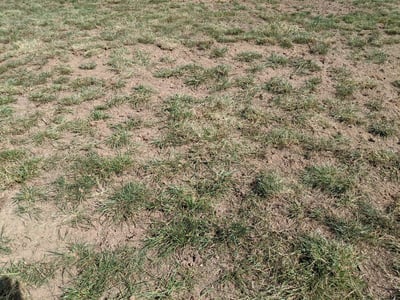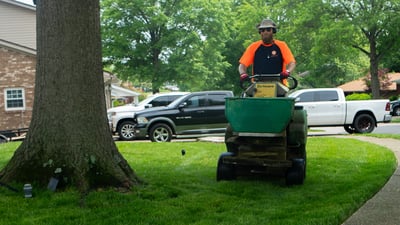

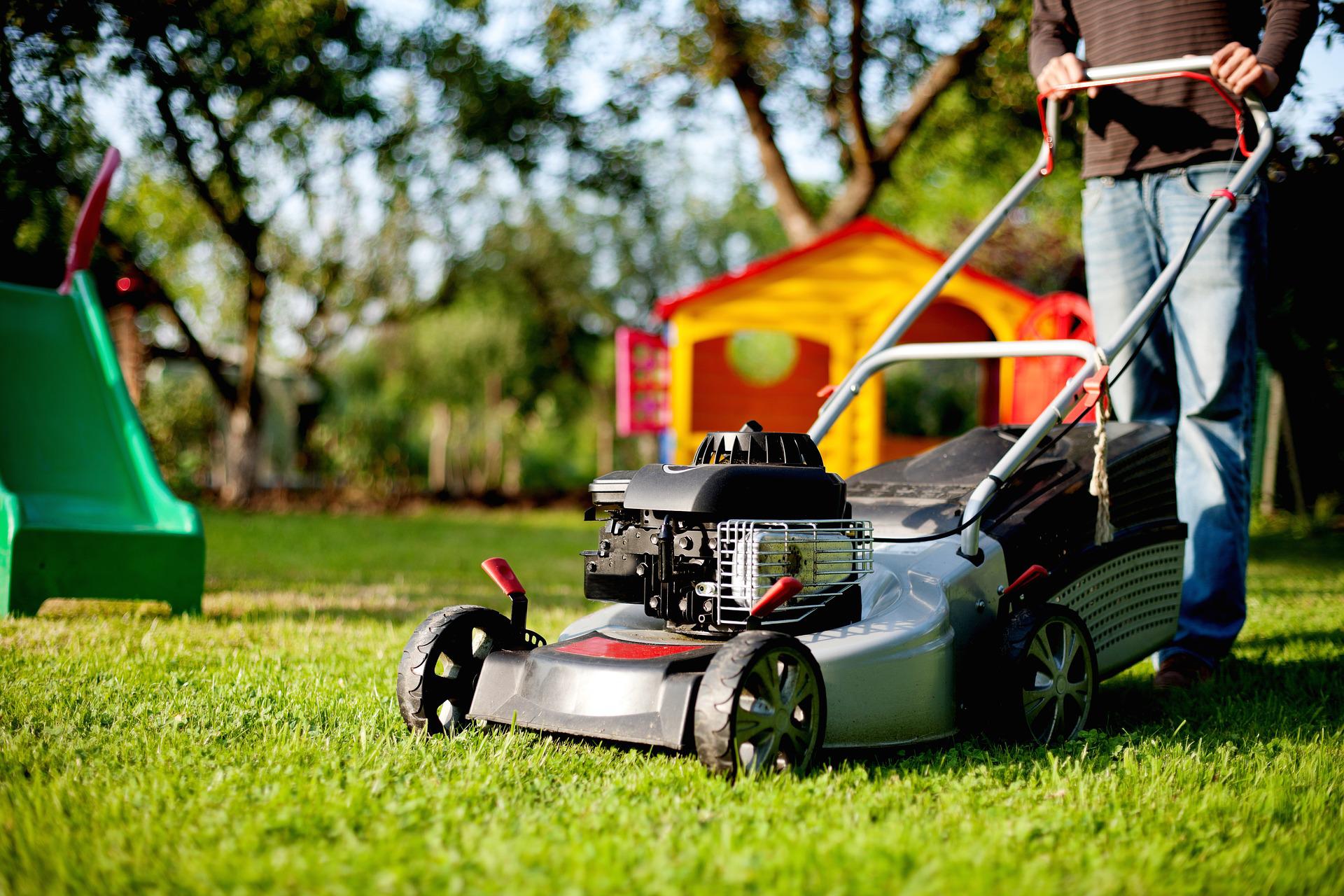
The best lawns are typically the result of a partnership between you and your lawn care provider. While your lawn care company is responsible for some really important services like fertilization and weed control, the tasks that you handle such as watering and mowing the lawn are also quite critical.
In fact, people tend to downplay just how important proper mowing is to the success of their lawn. It’s not uncommon for homeowners to notice a lawn turning yellow or looking bare in areas and assume it’s a mistake their lawn care provider made.
In reality, it’s quite possible that bad lawn mowing is to blame.
It’s often mistakenly assumed that you can’t go wrong with mowing. After all, there’s not much more to this service than pushing or driving a mower around. But lawn mowing techniques and habits can definitely have an impact on your lawn care results (both good or bad).
It’s critical this lawn mowing is done right.
Here are some mowing techniques that can have a negative impact on your Louisville lawn care program.
We know that people often like an extra-short lawn. But mowing too short is a poor mowing technique. When a lawn is mowed too short, it can put a tremendous amount of stress on it.
We advise that you cut grass to around four inches high.
We know that this is taller than people sometimes want, but it’s going to help promote a healthy lawn with deep roots. When you cut grass super short, the root systems grow shallow. You want a root system that reaches deep down into the soil.
Taller grass also happens to be greener grass. That’s because taller grass has more leaf tissue, which is where the process of photosynthesis is taking place. In other words, when cutting grass short, you actually affect the ability of your grass plants to produce food and grow green and healthy.
When people see yellowing grass, they automatically assume it’s a matter of being under-fertilized or it’s some sort of mistake that their lawn care provider made. In reality, it could be that the lawn is stressed from being mowed too short.
Cutting the lawn too short can also promote weed growth. A taller-cut lawn will have better moisture retention and start to crowd out opportunistic weeds that are trying to creep in.

Another mowing technique is to use a lawn trimmer for parts of the lawn…particularly the edges (areas that border hardscaping, like your driveway or sidewalk).
As we’ve already explained above, cutting the lawn too short puts a lot of stress on it and this is particularly easy to do with a trimmer. When you scalp the edges of your lawn, you also create an area that is more prone to weed growth. Crabgrass loves to creep into these spots.
That’s because crabgrass thrives in hot, thinned-out areas of the lawn. Scalped edges are an environment where it’s tough for grass to grow but crabgrass will thrive there.
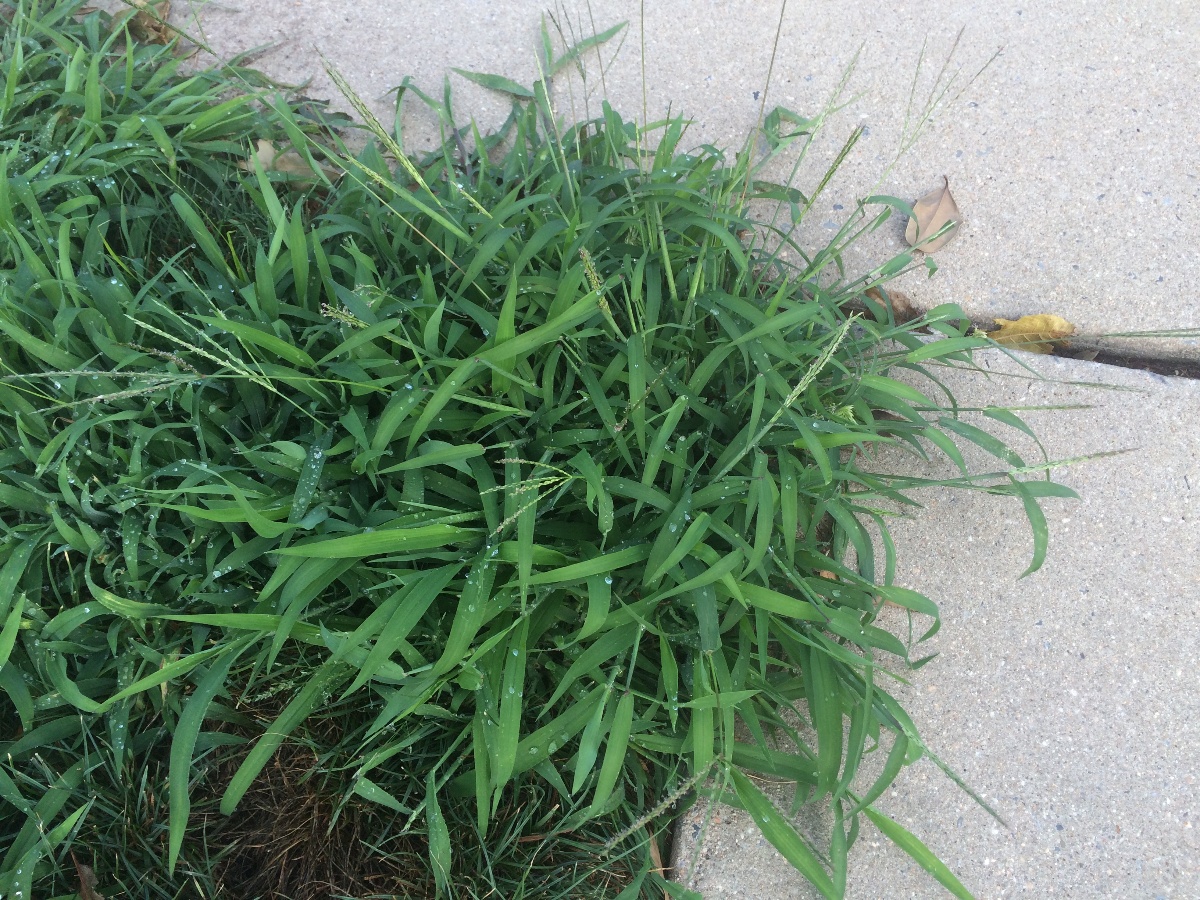
Did you know that when you cut grass, it’s best not to always cut in the same pattern or direction?
If you’re like a lot of homeowners, you probably have a mowing routine. You might start in one area of the lawn and follow the same mowing pattern each and every time that you cut grass.
But when you constantly mow the lawn the same way every time, you’re more likely to create ruts (from the tires and the pressure of the mower) and flatten the grass down. That’s because grass will start to grow in the same direction, based on your mowing pattern.
When you switch things up and change directions, you’ll help your grass grow more in an upright pattern. You will also help increase airflow by reducing soil compaction. Your grass will also look less worn and healthier when you start switching up your mowing direction.
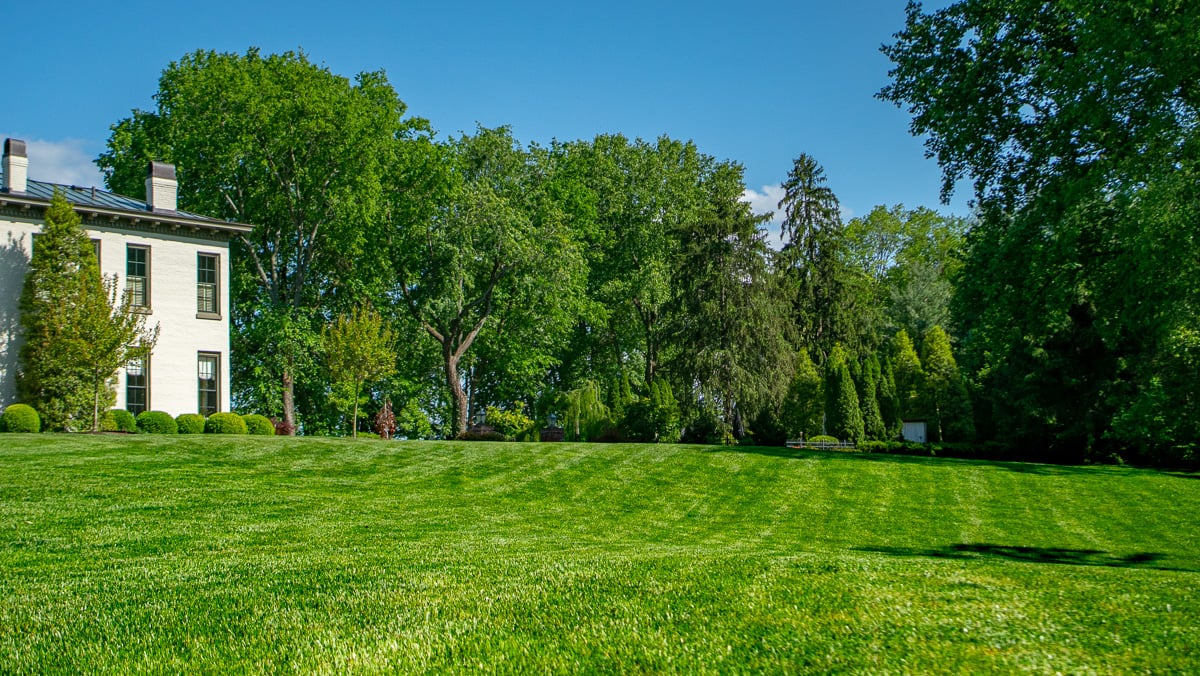
Are you attempting to cut grass with an old mower that you’ve never serviced? Mower maintenance is easy to fall behind on, but when you aren’t maintaining your equipment, it’s going to affect the results.
One of the biggest problems we see with lawn mower damage to grass occurs when people mow the lawn with a dull blade. When the blade is dull, it’s more likely to rip or tear the grass as opposed to making a clean, surgical cut. This type of jagged cut can be challenging for a lawn to bounce back from. This is when you’re going to see some yellowing.
We talk to homeowners who say that they’ve never changed their mowing blade. For the average homeowner, it’s optimal to replace that blade annually.
Another factor that can make your equipment subpar is the tire pressure. Mowing the lawn with deflated tires can make your mower “bounce” as it moves. This can lead to an uneven cut.
You also want to avoid mowing with an unlevel mowing deck, which will also produce uneven results.
If you’re worried about the condition of your lawn mower, it’s worth having it inspected. Sometimes your best course of action is to bite the bullet and purchase a new mower. If you have an old or cheap mower, it’s probably going to give you ongoing issues.
The fact is if you’re paying for lawn care services like fertilization and weed control, you don’t want to undo those efforts with mowing mistakes. Investing in a better mower might be worthwhile for your lawn as a whole.
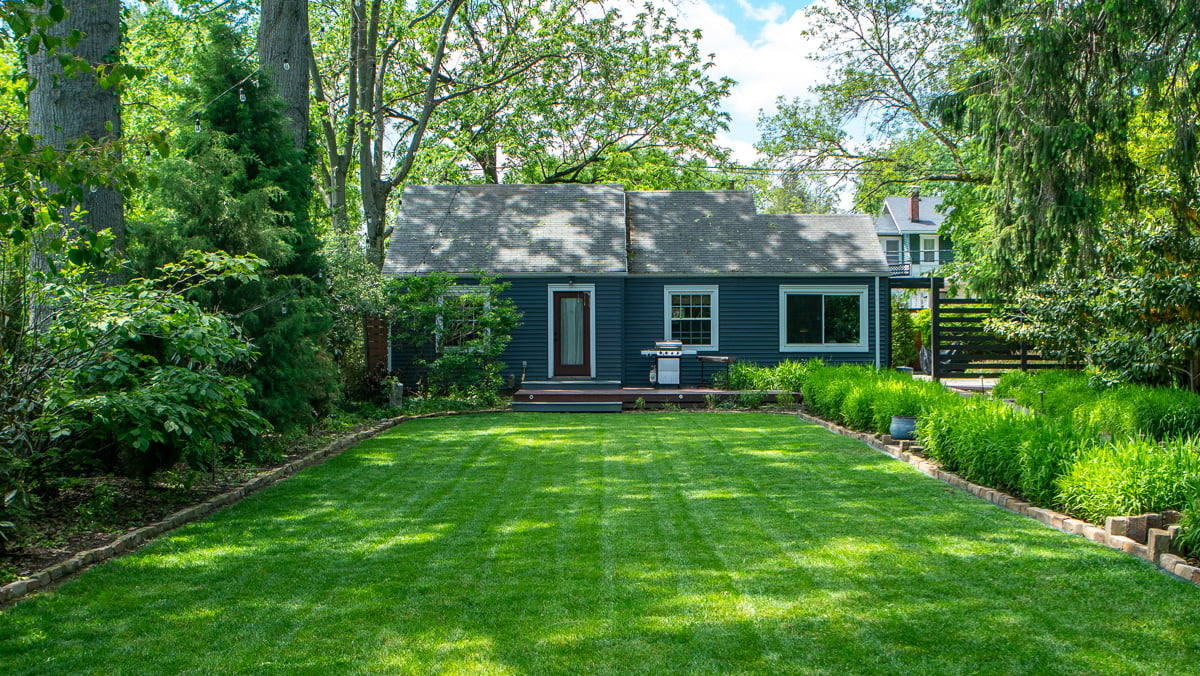
Another bad lawn mowing technique is mowing wet grass. When grass is soggy and wet, you can easily leave tire tracks and ruts in your yard.
Wet grass also tends to stick together making it very difficult to get a level cut. And it’s quite possible that the grass clippings will also clump together and clog up your mower.
Of course, if you mulch the grass clippings and leave them in the yard, they’ll also clump and create ugly piles. This could also make your lawn more prone to fungus growth with piles of wet grass left behind that don’t dry out so easily.
It’s always best to wait until the grass dries out in order to produce the best results.

Finally, how often you cut grass also matters. We understand that it can be challenging to keep up with regular mowing. Life gets busy and you just fall behind. But mowing an overgrown lawn can be very traumatic for the grass.
In the same way that mowing the grass too short is stressful for the lawn, mowing too much at one time is also a negative. The goal should be to cut no more than one-third of the grass blade at a time.
In order to achieve this, you’ll want to try and keep up with weekly mowing. If you fall behind, don’t make a drastic cut to try and “catch up.” Aim to get your lawn back to the proper height in one more than mowing session.
Mowing too much at once can cause your lawn to turn yellow as it attempts to recover from the stress.
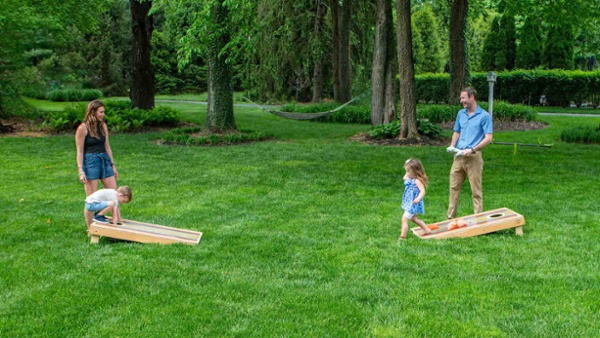
At Limbwalker, we do not handle lawn mowing. But we do care that our clients are performing this service properly because it’s going to have a direct impact on their lawn care results.
Often, homeowners are the ones performing lawn mowing. But sometimes it’s a professional mowing service…and they make mistakes, too. If you feel like your lawn mowing service is making errors, you’ll want to have a conversation about what can be improved.
At Limbwalker, we’re always here to offer advice, even when it has to do with services that we don’t offer ourselves. As we mentioned at the start of this article, we believe that the best lawns are the result of a strategic partnership between you (the homeowner) and us (the lawn care pro).
We’re always available to provide advice and tips that will help you see better results from your lawn. Together, we can have lawn care success.
Are you ready to have a thick and healthy lawn that’s getting everything it needs at your Louisville, KY home? Get in touch with us to get a quote for our lawn care programs, which include three lawn care pricing options.



